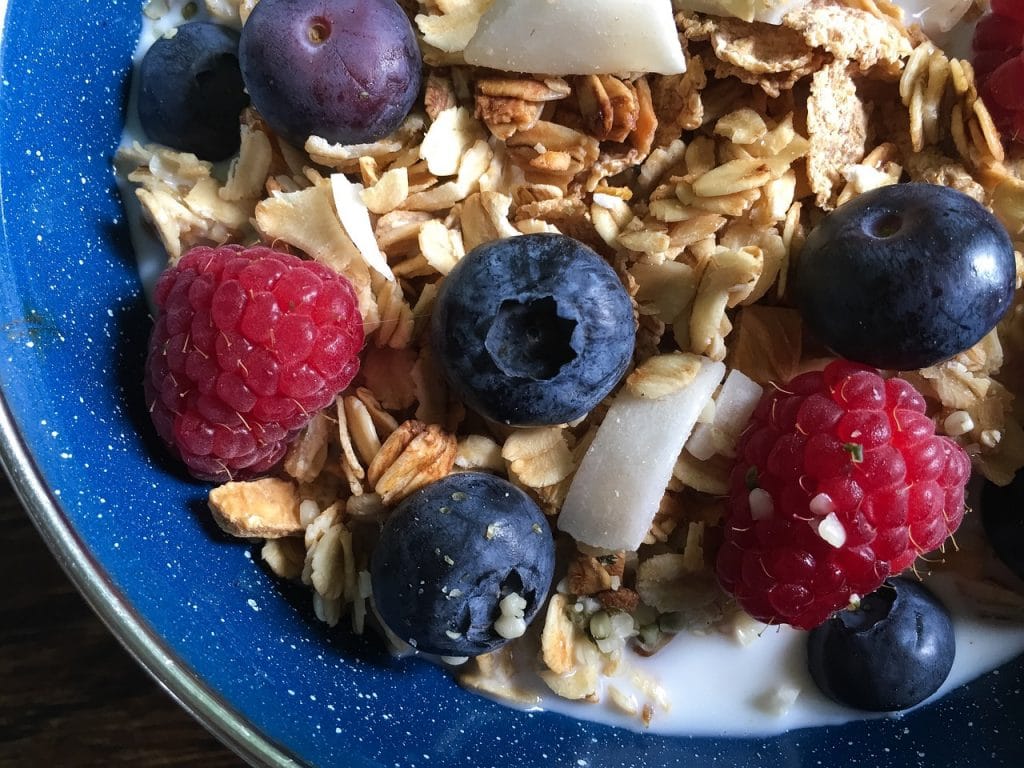
Fiber and Gout: Discover how a high-fiber diet can help your gout, the two different types of dietary fiber there are, why they’re important to your overall health, and the high-fiber foods that should be added into your gout diet.
What is Dietary Fiber?
The term “dietary fiber” is used to describe plant-based carbohydrates that pass through the small intestine without being absorbed (unlike sugar and starch) and into the large intestine (colon). Here, some components are eventually broken down and absorbed by the body with the rest being excreted in stools.
Dietary fiber is only found in plant foods. It can’t be sourced from meat, fish, poultry, or dairy.
There are two types of fiber your body needs: soluble and insoluble…
Soluble fiber, as its name suggests, dissolves in water and gastrointestinal fluids in the digestive tract forming a gel-like substance that helps to slow digestion and so improve blood sugar levels.
Insoluble fiber passes through your digestive system virtually unchanged, helping other foods move through more easily and adding bulk to stools to aid bowel movement and prevent constipation.
Both types of fiber have their own unique benefits. Most foods contain both types but are usually richer in one than the other, so it’s always best to consume a wide range of high-fiber foods.
High Fiber Foods
Some of the best foods for fiber are:
And, generally speaking, the more natural (unprocessed) the food is, the higher it is in fiber.
Health Benefits of Fiber
A fiber-rich diet has many health benefits. It can help to:
- maintain good bowel health
- regulate bowel movement
- lower cholesterol
- control blood sugar
- control body weight*
And it may even help to reduce your risk of:
- type-2 diabetes
- heart disease
- stroke
- bowel cancer
*Eating high-fiber foods will make you feel fuller for longer which can help stave off hunger pangs and control your weight. Remember, being overweight is a major trigger for gout.
A High Fiber Diet and Gout
Gout
Gout is a very painful arthritic condition caused by high uric acid circulating in the bloodstream — a condition called hyperuricemia — out of which crystals of monosodium urate (MSU) are precipitated in the joints and surrounding tissue.
The body’s innate immune system recognizes these MSU crystals as potentially harmful and triggers a response that floods the joint with white blood cells and inflammatory mediators to resist and eventually expel the intruders.
It’s this inflammatory response that produces the extremely painful symptoms of a gout flare: inflammation, swelling, heat, redness, and stiffness.
How Does Dietary Fiber Help Gout?
Dietary fiber may help your gout in two ways: by ing elevated serum uric acid and by reducing inflammation.
Uric Acid and Fiber
Several studies have associated a high-fiber diet with a decreased risk of hyperuricemia: abnormally high serum uric acid, the root cause of gout.
In one particular Japanese study,
Inflammation and Fiber
Other studies have looked at the impact of dietary fiber on chronic inflammation.
For example, a 2015 Brazilian study, published in the Journal of Leukocyte Biology, looked at the association between dietary fiber and the immune system’s inflammatory response to monosodium urate crystals in the joints. They injected monosodium urate crystals into the knee joints of mice that had been split into two groups, one fed a high-fiber diet and the other a low-fiber diet.
The researchers discovered that, whilst the onset of the inflammatory response induced by urate crystals was not affected by a high-fiber diet, it did produce a faster resolution compared with a low fiber diet.
In other words, although the high-fiber diet didn’t interfere with the triggering of the inflammatory response itself, it did shorten the length of time it took for the symptoms to subside with the joint and connective tissue back to normal.
And other studies have associated a high-fiber diet with lower C-reactive protein, a marker of inflammation linked to diseases like arthritis and gout. Less inflammatory markers mean less inflammation.
Eating More High-Fiber Foods With Gout
So, you should definitely add more fiber into your gout diet. Not only will it help reduce your risk of gout and alleviate the symptoms of an attack, it’ll also improve your overall health and reduce your risk of type-2 diabetes, heart disease, stroke, and bowel cancer.
Good sources of fiber include: vegetables, fresh and dried fruit, beans, peas, nuts, seeds, and whole grains.
But don’t go charging in and overdoing it. Your digestive system and the beneficial bacteria in your gut need time to adjust to such a significant change. So move gradually into it.
Consuming too much fiber can cause gas, bloating, stomach cramps, and constipation or diarrhea. This can be alleviated by drinking plenty of water which you should be doing, in any case, if you have gout.



